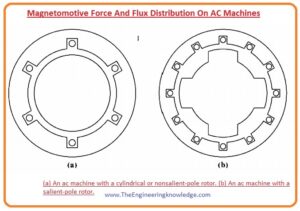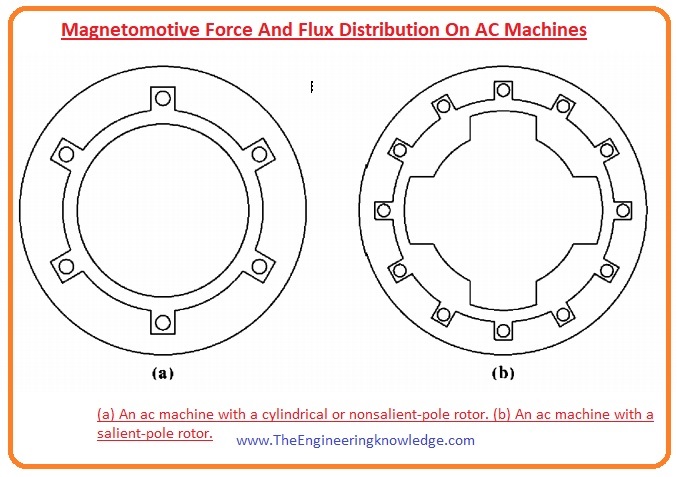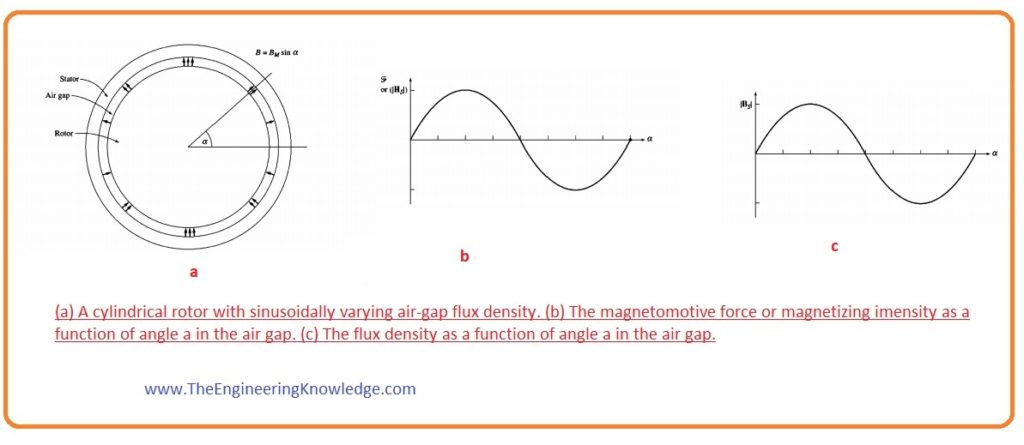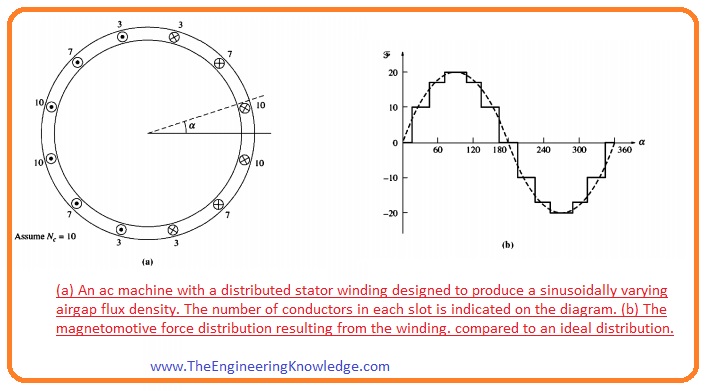 Hello friends, I hope all of you are having fun in your life. In today’s tutorial, we are gonna have a look at Magnetomotive Force And Flux Distribution On AC Machines. All-electric machines have 2 types of winding first one is armature and second is the field winding also called power-producing winding. Field windings generate a field in the machine it can be located at the stator and rotor according to the machine in which it is used, in mostly AC machines synchronous armature winding is in the stator of the machine.
Hello friends, I hope all of you are having fun in your life. In today’s tutorial, we are gonna have a look at Magnetomotive Force And Flux Distribution On AC Machines. All-electric machines have 2 types of winding first one is armature and second is the field winding also called power-producing winding. Field windings generate a field in the machine it can be located at the stator and rotor according to the machine in which it is used, in mostly AC machines synchronous armature winding is in the stator of the machine.
These machines have field windings at the rotor which is energized by the DC that is provided by the battery. After excitation field winding makes the north and south pole at the rotor. In today’s post, we will discuss how flux generated by field and armature relate with each other and produce force in the machine. I also have written an article on the rotating magnetic field it will help you to understand how the magnetic field is produced in the machine. So, let’s get started with the Magnetomotive Force And Flux Distribution On AC Machines.
Magnetomotive Force And Flux Distribution On AC Machines
- The flux in the machine does not work as simply as we think, as the rotor exists in the center of the machine, and the air gap is present between the stator and rotor. All these parameters make flux study a little bit more careful.
- The rotor can have two structures first one is cylindrical which is represented in the figure as A and other have a pole which is directed out of the surface it denoted in figure as B.
- In a cylindrical rotor the poles are non-salient and in the rotor in which the pole face is out from it then it has salient (a pole which projects to the armature of an electrical machine) poles.
- If we study the cylindrical rotor machine, then we will observe that the reluctance due to the air gap is higher than the reluctance due to the stator and the rotor.
- So flux will follow the smallest path through the air-gap and will move among the stator and rotor.
- To generate the sine waveform voltage in the cylindrical rotor machine the variation in the flux magnitude moving through the air gap should also be sine waveform.
- The flux will vary like sin waveform if the magnetic intensity and magnetic force (f) variation also like sine waveform.
- The simplest way to gain a sine shape waveform of magnetomotive force is to put the winding’s turns which generates the magnetomotive force in a slot that is less parted from each other and the change in the no of turns of the windings in the slots should also like a sine waveform.
- In the given figure the first picture (A) showing winding and (B) shows the magnetic force resultant from the winding.
- The no of conductors in every slot is given as.
nc = Nccos
- In this equation, the Nc is the no of conductors at an angle of zero degrees.
- Figure (B) explains this spreading of conductors makes a near estimate to a sine waveform spreading of magnetomotive force.
- Moreover, if there are many slots in the machine and are very close to each other it will make a more clear magnetomotive force like the sine waveform.
- Practically it is not possible to design windings according to nc = Nccos equation because only specific no of slots are available in the machine and the specified no of conductors can be added in every slot.
- So, the subsequent magnetomotive force spreading is almost sine waveform, and there will be a larger no of harmonic elements that will exist.
- To reduce these undesired harmonic elements the fractional pitch winding is used in the machine.
So, friends, it is the detailed tutorial on Magnetomotive Force And Flux Distribution On AC Machines, I have mentioned each and everything related to this post. If you further have any questions ask in the comments. See you in the next tutorial.









How to produce sinusidal distribution flux in space
Hello! I could have sworn I’ve been to this site before but after checking through some of the post I realized it’s new to me. Anyways, I’m definitely delighted I found it and I’ll be bookmarking and checking back often!